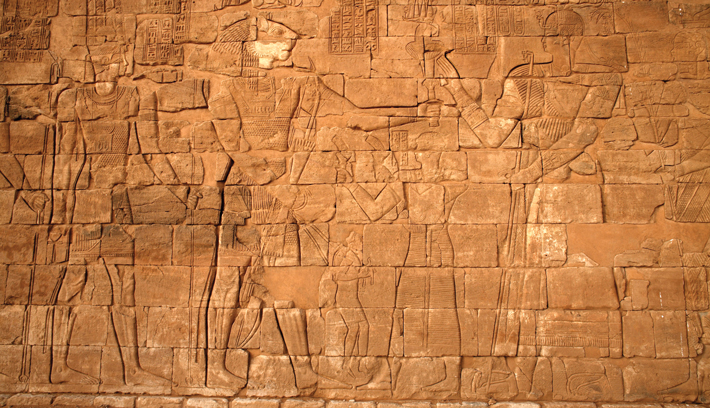By JARRETT A. LOBELL

 Many of the gods of the ancient Kingdom of Kush (ca. 760 B.C.–A.D. 350)—an empire that extended at its height from Nubia (modern Sudan) to encompass parts of North Africa—were of Egyptian origin. However, the Kushites also venerated non-Egyptian deities. Principal among these was Apedemak, a lion-headed god who was first worshipped as a local deity in southern Nubia and came to be strongly associated with Kushite royalty. “The central connection of this Nubian lion god with strength and kingship cannot be overstated,” says Wellesley College archaeologist Elizabeth Minor. For the ancient Nubians, she explains, Apedemak was viewed as alternately dangerous and under control. The god’s dual nature likely originated in how the Kushites’ predecessors in northern Nubia, the Kerma culture (see "A Nubian Kingdom Rises"), conceived of and portrayed lions. The ancient Egyptian lion-headed deity Sekhmet, a goddess of both war and healing, also possessed a similar seemingly contradictory identity.
Many of the gods of the ancient Kingdom of Kush (ca. 760 B.C.–A.D. 350)—an empire that extended at its height from Nubia (modern Sudan) to encompass parts of North Africa—were of Egyptian origin. However, the Kushites also venerated non-Egyptian deities. Principal among these was Apedemak, a lion-headed god who was first worshipped as a local deity in southern Nubia and came to be strongly associated with Kushite royalty. “The central connection of this Nubian lion god with strength and kingship cannot be overstated,” says Wellesley College archaeologist Elizabeth Minor. For the ancient Nubians, she explains, Apedemak was viewed as alternately dangerous and under control. The god’s dual nature likely originated in how the Kushites’ predecessors in northern Nubia, the Kerma culture (see "A Nubian Kingdom Rises"), conceived of and portrayed lions. The ancient Egyptian lion-headed deity Sekhmet, a goddess of both war and healing, also possessed a similar seemingly contradictory identity.
In the 1960s, archaeologists uncovered the earliest depiction of Apedemak in the Lion Temple at the site of Musawwarat es-Sufra, in central Sudan. The single-room temple was built of sandstone by the Nubian king Arnekhamani (reigned ca. 235–218 B.C.). Although the building had collapsed in antiquity, it was nevertheless in good enough condition when it was discovered that it could be reconstructed. The temple is decorated with reliefs showing Apedemak along with two other indigenous Kushite deities: Sebiumeker, a god of fertility and procreation, and Arensnuphis, about whom very little is known. “Apedemak developed out of a long indigenous Nubian history of lion deities whose names aren’t known to us,” says Minor. “The important nuance to Kushite worship of Egyptian gods is that they always adopted and adapted foreign deities into their own specific forms and practices that fit into their cosmogony. Apedemak is a manifestation of this creative divine worldview.”

